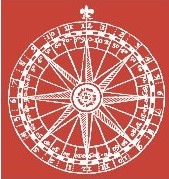Black Confraternity Members Performing Afro-Christian Identity in a Renaissance Festival in Mexico City in 1539
In February 1539, Mexico City was the stage of a lavish two-day festival meant to commemorate the Truce of Nice, signed the year before between Emperor Charles V and King Francis I of France at Aigues-Mortes. In this article, I analyze Bernal Díaz…
Listed in Article | publication by group Iter Community
Version 1.0 - published on 18 Oct 2025
Licensed under Creative Commons BY-NC 4.0
Description
In February 1539, Mexico City was the stage of a lavish two-day festival meant to commemorate the Truce of Nice, signed the year before between Emperor Charles V and King Francis I of France at Aigues-Mortes. In this article, I analyze Bernal Díaz del Castillo’s description of a performance by “more than fifty” blacks with “their king and queen”, all “wearing great riches of gold and precious stones and pearls and silver.” This article argues that the black participants of this festival most likely belonged to a Catholic confraternity, which not only would demonstrate that black confraternities were brought to the Americas very early, but also that, as in the Iberian Peninsula, they were used by members as vehicles of social mobility and agency from the start of imperial expansion. Juxtaposing this and other black performances with instances of perceived black resistance to Spanish domination, the article shows how confraternities could offer blacks a space where they could continue some of their ancestral festive practices without being perceived as a threat to colonial order.
Cite this work
Researchers should cite this work as follows:
Tags
Notes
Original publication: Valerio, Miguel A. “Black Confraternity Members Performing Afro-Christian Identity in a Renaissance Festival in Mexico City in 1539.” Confraternitas 29 (1): 2018. 31-54. DOI: . This material has been re-published in an unmodified form on the Canadian HSS Commons with the permission of Iter Canada / Confraternitas. Copyright © the author(s). Their work is distributed by Confraternitas under a Creative Commons Attribution-NonCommercial 4.0 International License. For details, see https://creativecommons.org/licenses/.
Publication preview
Iter Community
This publication belongs to the Iter Community group.
When watching a publication, you will be notified when a new version is released.
